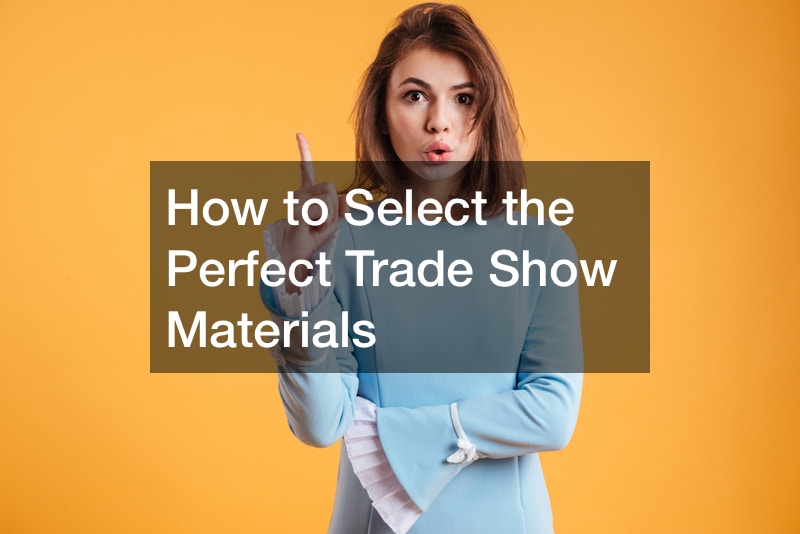How to Select the Perfect Trade Show Materials
Disclaimer: Geek Support Tech. This site provides computer and technology content for informational purposes only.
Trade fairs and exhibitions serve as vital platforms for businesses to showcase their products and services, forge connections, and enhance brand visibility. The success of a trade fair participation often hinges on the selection of the right trade show materials.
On average, companies dedicate approximately 31.6% of their overall marketing budget to events and exhibitions. Notably, U.S. exhibitors invest over $24 billion each year in trade show displays. Surprisingly, despite this substantial investment, around 70% of these exhibitors fail to establish concrete objectives for their trade show exhibits.
These materials play a pivotal role in attracting visitors, conveying brand messages, and leaving a lasting impression. In this article, we will be discussing a number of types of trade fair materials, highlighting their respective benefits and drawbacks.
1. Booth Displays and Banners
Booth displays and banners are among the most common trade show materials. They come in various sizes, shapes, and designs, making them versatile options for businesses of all types. Booth displays are great for showcasing products, services, and brand information.
These materials provide ample space for creativity, enabling businesses to visually communicate their brand identity effectively. However, their drawbacks include the need for proper storage and potential difficulties in transportation due to their size.
2. Promotional Giveaways
Promotional giveaways are a hit among trade fair attendees. These can range from branded pens and tote bags to tech gadgets and custom-made items. The benefits of using giveaways are two-fold. One is that they attract visitors to the booth and two is that they serve as memorable souvenirs that extend brand recall beyond the event.
However, selecting the right giveaway can be challenging, as it should align with the brand and resonate with the target audience.
3. Printed Collateral
Printed materials such as brochures, pamphlets, and product catalogs are indispensable for conveying detailed information about products and services. These digital printing materials offer a tangible takeaway for visitors to review later, providing in-depth insights into the offerings.
Yet, the drawback lies in the potential environmental impact of excessive paper usage. Opting for eco-friendly paper and considering digital alternatives can mitigate this concern.
4. Interactive Technology
Interactive technology, like touchscreen displays and virtual reality setups, adds a modern and engaging dimension to trade fair booths. Such materials enable businesses to offer immersive experiences, demonstrate products in action, and collect visitor data for future engagement.
The drawback here is the initial investment and the requirement for technical expertise to set up and manage the interactive elements effectively.
5. Branded Apparel
Trade fair staff dressed in branded apparel, such as T-shirts or uniforms, can significantly enhance booth visibility. It creates a sense of unity and professionalism, making it easier for attendees to identify booth representatives.
However, the drawback includes the challenge of selecting comfortable and stylish apparel that aligns with the brand’s image.
6. Backdrops and Signage
Backdrops and signage serve as impactful visual cues that help trade fair booths stand out. They can be customized with captivating graphics and slogans that encapsulate the brand’s message. These materials work well in both large and small booth spaces.
The drawback, however, lies in the need for careful design to ensure that the backdrop effectively communicates the intended message.
7. Audiovisual Presentations
Incorporating audiovisual presentations can captivate the target audience’s attention and deliver key messages effectively. Videos and slideshows can showcase product features, success stories, and brand values.
However, trade show environments can be noisy, potentially affecting the effectiveness of audio-based presentations. Moreover, technical glitches could arise, requiring a backup plan.
8. Modular and Portable Displays
Modular and portable displays offer flexibility and ease of setup. These materials are ideal for businesses participating in multiple trade fairs or seeking a cost-effective solution. They can be customized to fit different booth sizes and layouts.
One drawback is that some modular systems might lack the visual impact of larger, custom-built booths.
Choose the Right Trade Show Materials for Your Business
In conclusion, the wide selection of trade show materials is a strategic decision that directly impacts the success of a company’s participation. Each type of material brings unique benefits and drawbacks to the table. To make an informed decision, enterprises must consider their objectives, target audience, budget constraints, and brand identity.
By carefully weighing these factors, businesses can create a compelling trade fair presence that resonates with attendees and leaves a lasting impression.
